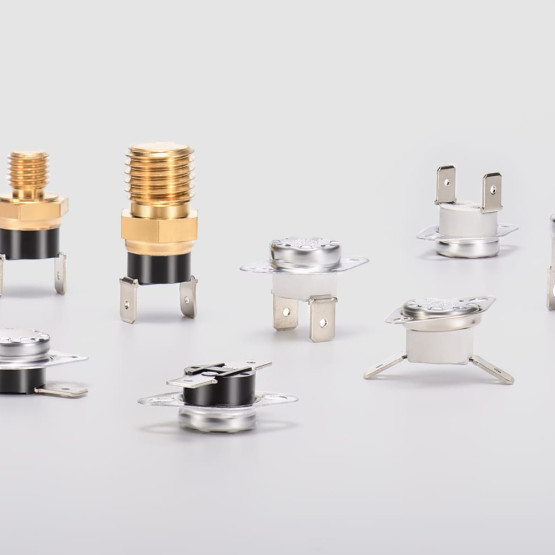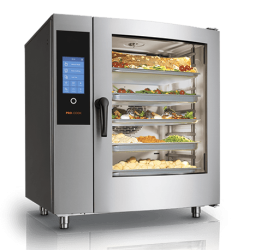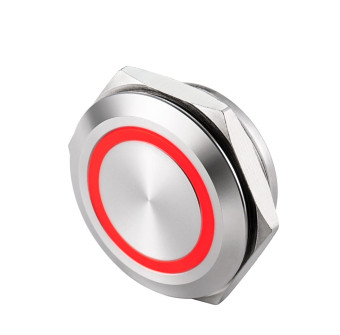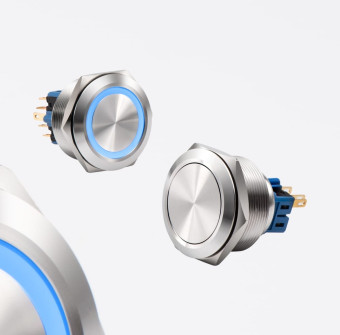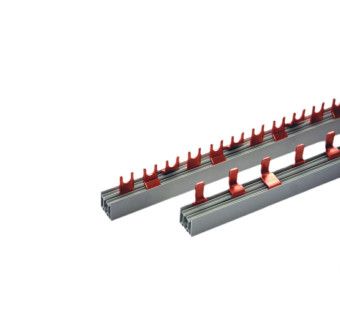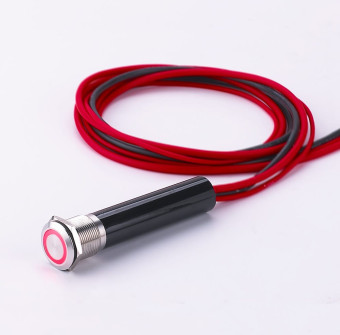- KSD301 series snap action thermostat is a kind of miniature hermetically sealed bimetal snap disc (1/2″). It is of single-pole single-throw structure and works under resistive load.
- KSD301 bimetal thermostat is in wide use in a great variety of compact type home appliances with automatic reset or manual reset to provide temperature control or temperature protection.
- KSD301 snap action thermostat series is a small-size bimetal thermostat series with a metal cap,which belongs to thermal relays family. The main principle is that one function of bimetal discs is snap action under the change of sensing temperature. The snap action of disc can push the action of the contacts through the inside structure, then caused on or off of the circuits finally. The main characteristics are the fixation of working temperature, the reliable snap action, less flashover, longer working life and less radio interference.




Snap Action Thermostat
KSD301 snap action thermostat is a reliable bimetal mechanical thermostat that provides a rapid response time when snapping open/close switch contacts. With fixation of working temperature, reliable snap action, less flashover, longer working life, and less radio interference, the bimetal snap disc offers long-lasting performance and reliability for your products. CQC and TUV applicable.
Key Features
Specification
Electrical Rating: 16A 125V AC(Resistive Load), 10A 250V AC(Resistive Load), 16A 250V AC(Resistive Load)
Differential: 10~30K (15K Standard)
Temp. Tolerance: Operating Temp. ±3℃, ±5℃
Heat Durability: 220℃ Max. (PPS)
Circuit Resistance: 50mΩ Max.
Insulation Resistance: 100MΩ Min. at DC500V
Dielectric Strength: AC 1000V for 1m or AC 1800V for 1s
Operating Life: 100,000 Cycles (16A 125V/ 10A 250V AC) and 10,000 Cycles (16A 250V AC)
CQC, TUV Applicable
Applications
Langir’s snap action thermostats offer reliable temperature control solutions for a wide range of applications. With a rapid response time and ability to handle high currents, these snap switches are ideal for household appliances, industrial equipment, and specialized applications, such as medical equipment or laboratory instruments. Commercial Snap Disc thermostats are most commonly found in appliances, heat and smoke detectors and HVAC equipment.
Order Code
(a) Contact type
A = Contact Opens When Temperature Rises to Set Point (Normally Close)

B = Contact Close When Temperature Rises to Set Point(Normally Open)

M = Manual Reset
(b) Temp. Tolerance
| Grade | A | *B |
| Action ±℃ | 3 | 5 |
| Reset ±℃ | 4 | 8 |
The grade of temp. tolerance is “A”, When the operating temp. is less than 105℃.
The grade of temp. tolerance is “B”, When the operating temp. is over 106℃.
(c) Bracket Type
* STAINLESS STEEL CAP: D, DL, V, U Type
Fixed Bracket (Unitl: mm/inch)
** MATERIAL: BRASS AND BRASS OPTIONAL(STANDARD: BRASS)
** SCREW TYPE: M4X0.7 L=6mm(STD), M5X0.8 L:6mm(STD) OR CUSTOMIZATION
C Type
B Type
E Type
**H Type
**R Type
X Type
*D Type
*DL Type
*V Type
(OPEN CAP)
P Type
(4 POSTS SHELL)
Loose Bracket (Unitl: mm/inch)
O Type
*U Type
M Type
S Type
G Type
(Screw or Spot Avallable)
(d) Terminal Orientation
F
Type (0°)
R
Type (90°)
T
Type (45°)
L
Type (90°X1)
(e) Terminal Size
Type 1
(AMP #187 Tab)
Type 2
(AMP #250 Tab)
Type 3
(Solder Tab)
Type 4
(Dip Tab)
Type 6
(Weld Tab)
Type 7
(AMP #187 Tab)
FAQs
What is a snap action thermostat?
A snap action thermostat is a type of temperature control device that uses a bimetallic strip to achieve rapid switching between on and off states when the temperature reaches a set point.
How does a bimetal thermostat work?
A bimetal thermostat operates based on the principle of differential expansion of two dissimilar metals. As temperature changes, the metals expand or contract at different rates, causing the bimetallic strip to bend and activate or deactivate the switch.
What are the advantages of using a snap action thermostat?
Snap action thermostats offer rapid response and precise temperature control, making them suitable for applications that require quick and accurate switching at specific temperature thresholds.
What is the difference between a snap disc and a snap action thermostat?
A snap disc is a type of switch that uses a bimetallic disc to trigger the switching action. In contrast, a snap action thermostat is a complete temperature control device that incorporates a snap action mechanism along with a temperature sensing element.
How does a snap disc thermostat work?
A snap disc thermostat utilizes a bimetallic disc that snaps between two positions as the temperature rises or falls. The disc’s movement triggers the opening or closing of electrical contacts, controlling the connected circuit.
What are the typical applications of mechanical thermostats?
Mechanical thermostats find application in various heating, cooling, and temperature control systems, such as HVAC systems, water heaters, ovens, and refrigerators.
Can a snap action thermostat be used for both heating and cooling applications?
Yes, snap action thermostats can be used for both heating and cooling applications by configuring the switch action accordingly. They can control the operation of heating elements, fans, compressors, or other components based on temperature requirements.
What are the temperature range options available for snap action thermostats?
Snap action thermostats are available in various temperature ranges to suit different applications. The temperature range can be customized based on specific requirements, typically ranging from -40°C to 250°C (-40°F to 482°F) or higher.
Are snap action thermostats sensitive to environmental factors such as vibration or shock?
Snap action thermostats are designed to be robust and resistant to environmental factors like vibration or shock. They are constructed to ensure reliable operation even in challenging conditions.
How can I select the right snap action thermostat for my application?
Selecting the right snap action thermostat involves considering factors such as temperature range, current and voltage ratings, switch configuration, mounting options, and environmental conditions. It is recommended to consult with Langir to ensure the thermostat meets your specific requirements.

 English
English 简体中文
简体中文